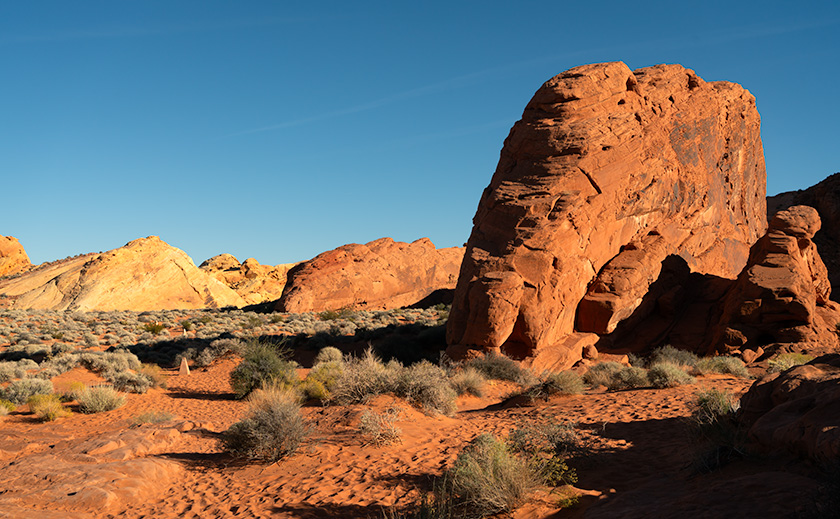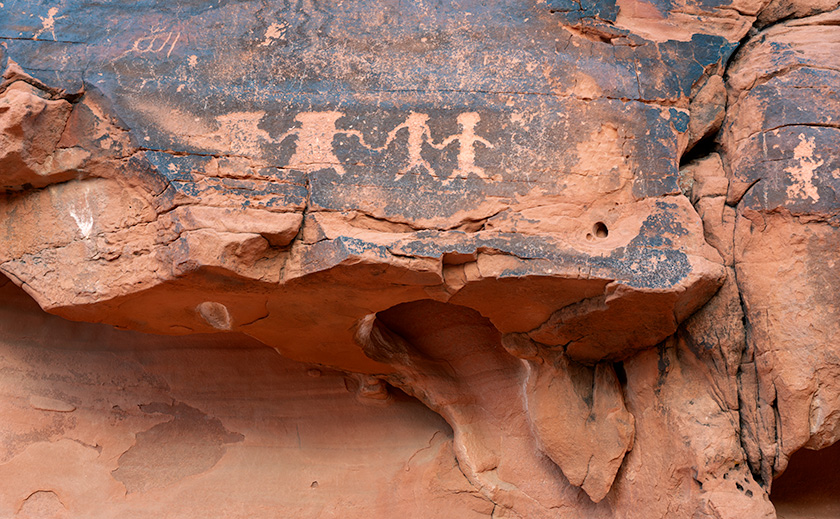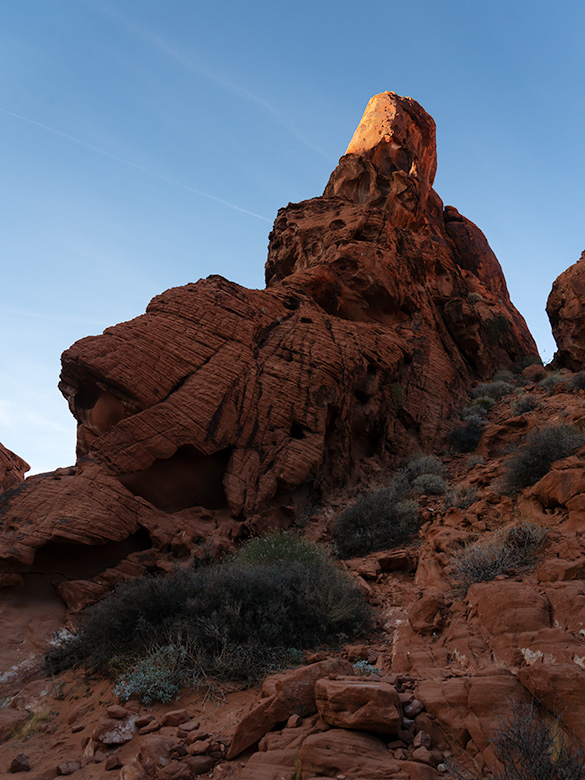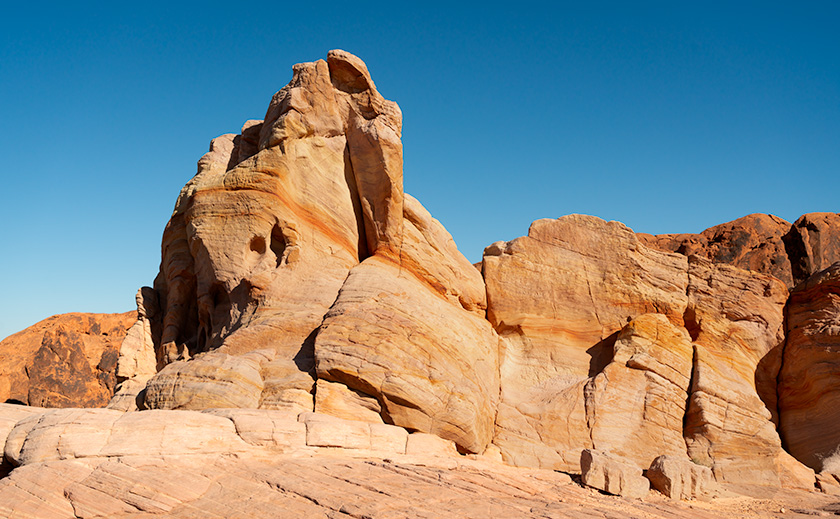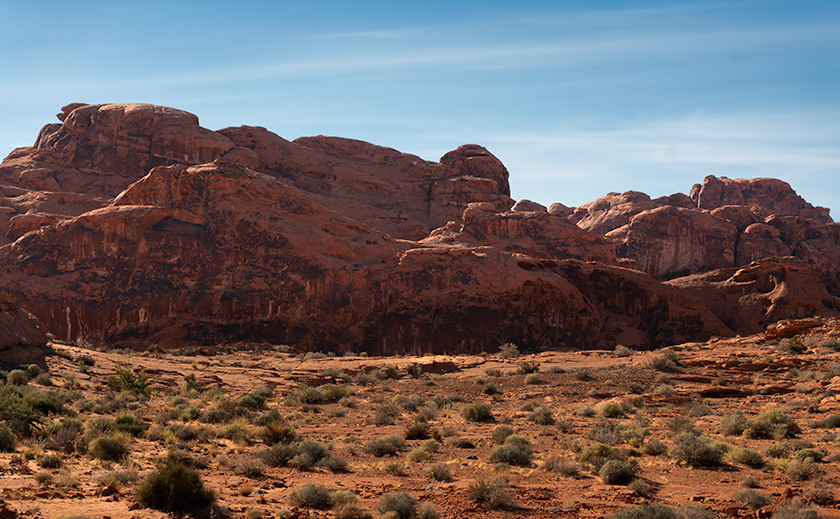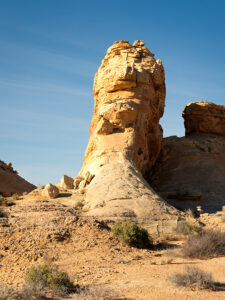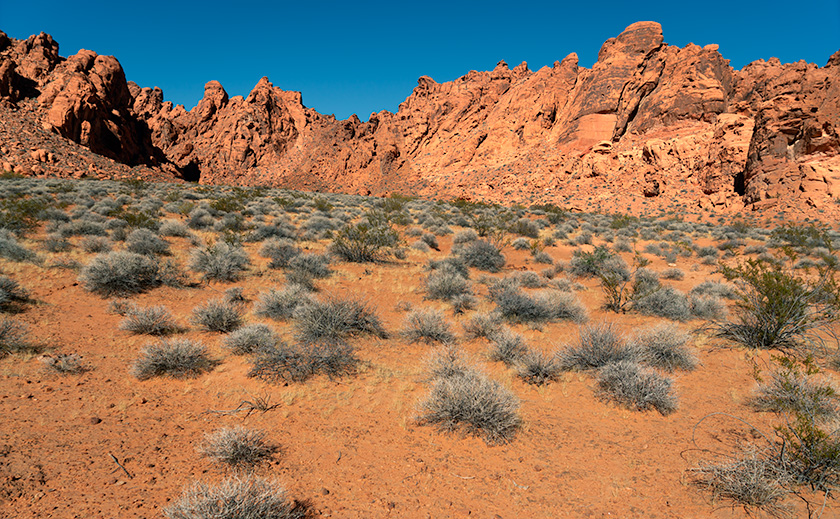
Welcome back to the grand finale of our Valley of Fire State Park extravaganza. This week, we’re taking a stroll through the park’s living tapestry, where life’s tenacity is as clear as the desert sky. If you’re like us, you’ll never see any of the animals on the brochures, except maybe a big-eyed rabid chipmunk with its hand out begging, “M&Ms for my baby.” Usually, the daytime has too much traffic and noise for wild animals, so if you’re hunting for a game, grab a campsite or come early and stay late.
Valley of Fire, renowned for its blazing sandstone formations, is also a sanctuary for various desert flora and fauna. Amidst the rugged terrain, the creosote bush reigns supreme; its waxy leaves a testament to its survival prowess in the harsh climate. Accompanying it is the brittlebush, its silver-gray foliage contrasting starkly with the red sand beneath. These two species flourish in the Nevada desert; they show off with yellow flowers in spring.
Wildlife enthusiasts might try to glimpse the desert bighorn sheep, masters of rocky terrains and cliffs. They usually hang out on ridgelines and cliff faces but come down for water in the mornings and at day’s end. The park is also home to the clever kit fox, the industrious black-tailed jackrabbit, and the elusive coyote, each playing their part in the desert’s symphony.
Photographic Pursuits Amongst the Desert Blooms
As a photographer, capturing the essence of this diverse ecosystem is both a challenge and a delight. The dance of light and shadow across the landscape breathes life into each image, from the delicate interplay of creosote branches to the fleeting moments of a bighorn sheep in motion if you’re ready with your long lens.
The park’s biodiversity extends beyond the reach of my lens, inviting visitors to look closer and discover the beauty in the details—the pattern of a lizard’s skin, the flight of a raven, or the vibrant hues of wildflowers that defy the desert’s aridity.

Beyond the Jackpot: Valley of Fire’s Call
So, next time you find yourself in Nevada, yearning to escape the neon lights, remember that just a stone’s throw from the buzz of Vegas lies a world abounding with natural wonders. Valley of Fire State Park offers a chance to reconnect with nature and experience Nevada’s quieter yet equally thrilling side.
Pack your hiking boots, bring your sense of wonder, and don’t forget your camera. The park’s trails await, ready to reveal the secrets of the desert. It’s an experience that promises to be as rewarding as any jackpot—perhaps even more so.
I have uploaded a larger version of this week’s featured image. You can see them on my website using this link < Jim’s Web> and on my Fine Art America Page by clicking here <FAA Page>. I hope you enjoy seeing them.
Next week, we begin a new project, and this time, it’s not a place but an event that motivated me to grab my camera and get out of the house.
Until our next adventure, may your curiosity be as endless as the desert skies and your spirit as resilient as the flora and fauna that grace this fiery valley.
Keep exploring, keep laughing.
jw
Techniques: Capturing the Desert’s Essence
This week, let’s discuss capturing the subtle textures of the desert. I focused on the interplay of textures and colors when photographing the resilient creosote and brittlebush against the sandstone backdrop. The key is to find the right angle where the light enriches the colors without overpowering the delicate details of the plants.
In post-processing, I often use selective adjustments to enhance the flora’s vibrancy without losing the terrain’s natural ruggedness. If you get carried away with the adjustment sliders, you can overwhelm the subtle plant colors with too much contrast and saturation. It’s a delicate balance that, when struck, transforms a photograph into a window into the soul of the desert.

